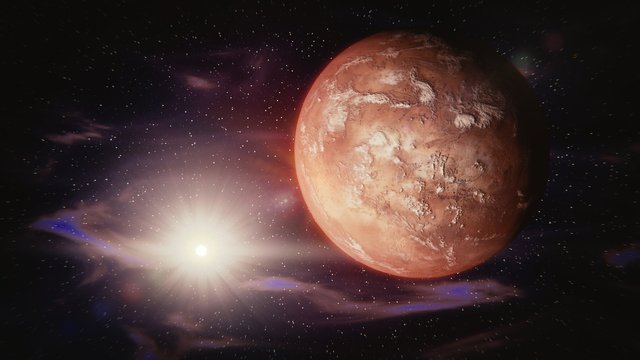Mapping Electric Currents Around Mars
The MAVEN probe mapped currents around Mars. These electric currents could be important for humanity as they play a key role in how the atmosphere of Mars leaks into space.

Image by GooKingSword from Pixabay
- Be also sure to check out my other posts and follow me @kralizec and subscribe to my Youtube channel at Kralizec Gaming Youtube Channel
In August of 2014, the American probe MAVEN (Mars Atmosphere and Volatile Evolution) got into orbit around the red planet. Since then, it has been orbiting Mars on a distinctly elliptic orbit and studying its atmosphere. Since then, MAVEN has gathered enough data so that experts can create a detailed map of the system of electric current in the Martian atmosphere.
As the research lead Robin Ramstad from University in Colorado, Boulder says these electric currents are quite important from our POV. They seem to have a key role in how the Martian atmosphere escapes into the surrounding space. It is almost certain that losing part of its atmosphere led to the fact the once probably habitable planet became inhospitable.
The previous research that was attempting to explain how the atmosphere got lost told us that the main cause could be giant dust storms raging across the surface of the red planet. But now it seems that that hypothesis may have been wrong. New data created thanks to the data gathered by the MAVEN probe suggest that the magnetic field of Mars is just too weak to protect the planet from the solar wind which was and still is slowing blowing its atmosphere away.
Luckily, The Earth Is Different
Our planet is also surrounded by systems of electric currents. Sometimes we can actually “see” them even from the ground in the form of the gorgeous auroras. But there is a major difference between the Earth and Mars. Earth has a planetary magnetic field. Mars only has little patches of magnetized planetary crust.
Because of this, the electric currents in the atmosphere of Mars transform the energy of solar wind into magnetic and electric fields that do not protect the atmosphere of Mars. Instead, they actually increase the speed at which the electrically charged particles escape from the atmosphere of Mars.
According to Ramstad, the atmosphere of Mars behaves sort of like metal ball near an electric circuit. Electric current flows through the higher layers of the atmosphere Mars – the strongest at around 120 to 200 kilometers above the surface of Mars.
Direct measurements of the electric currents in the atmosphere of Mars would be extremely hard. Luckily for use, these electric currents also affect the structure of magnetic fields carried by solar wind which we were capable of measuring by the MAVEN probe.
Sources:
- If you like the content I’m producing about science maybe you will like the content I produce about gaming as well! Be sure to check out my other posts!